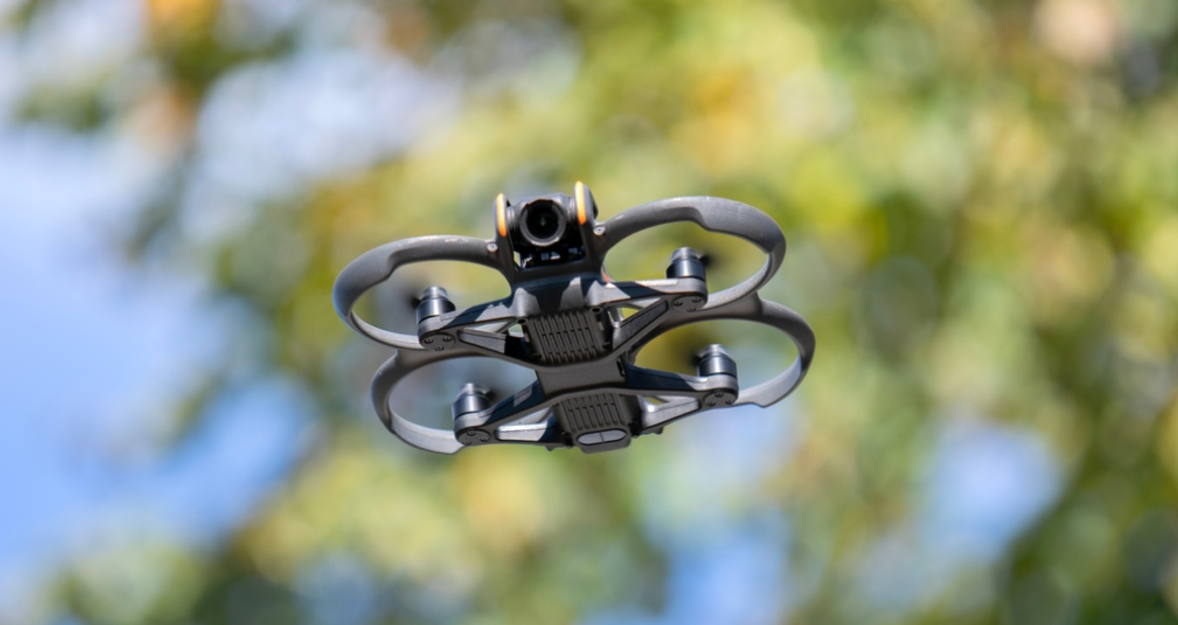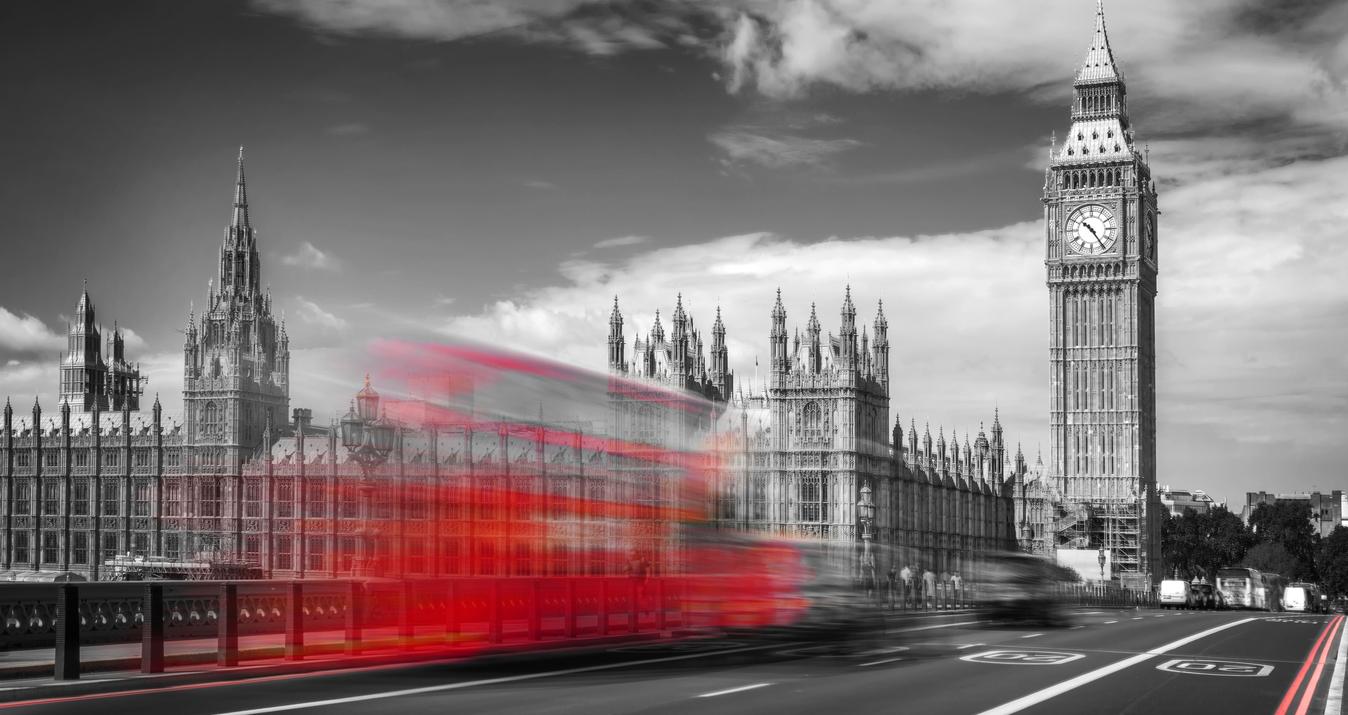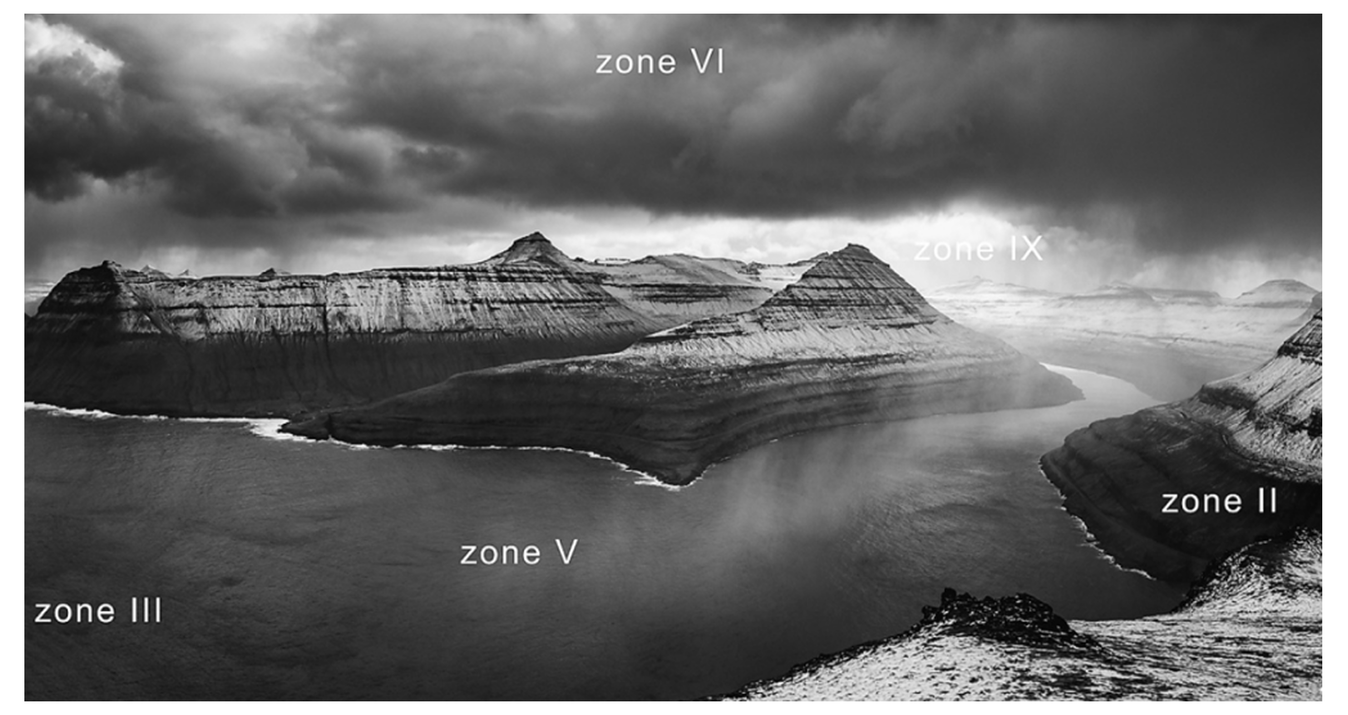The Ultimate Guide to GPS Drones in 2025
Last Updated on October 02, 2025

Learn how GPS drones work and why they’re perfect for travel and real estate photography. Discover key flight modes, safety features, and tips for smooth, stable aerial shots.
In 2025, consumer drones with satellite positioning will be steadier and safer than ever. They lock onto satellites, maintain their position in the wind, log routes, and trigger a Return-to-Home function if the signal drops. For travel, real estate, or casual filming, GPS drones eliminate guesswork and maintain a steady hover.
This guide covers how onboard GPS works, practical flight modes, geofencing basics, and what to check before takeoff. You’ll also get simple tips for camera settings, storage, and post-processing, plus model picks across budgets — all focused on smooth, predictable flights and clean footage.
What is a GPS Drone?
 Before you fly, establish a brief routine: check your props and batteries, wait for a solid satellite lock, confirm the home point, and set an RTH altitude above nearby roofs and trees. Pack extra cards and one spare battery. Watch wind forecasts and light direction. Test clips of the shoots, check them in the field, and adjust the exposure or white balance, and only then take on the longer runs.
Before you fly, establish a brief routine: check your props and batteries, wait for a solid satellite lock, confirm the home point, and set an RTH altitude above nearby roofs and trees. Pack extra cards and one spare battery. Watch wind forecasts and light direction. Test clips of the shoots, check them in the field, and adjust the exposure or white balance, and only then take on the longer runs.
A GPS drone is a multicopter or fixed-wing aircraft with an onboard satellite receiver. It locks position, holds a steady hover in wind, records a home point for Return-to-Home (RTH), and saves flight logs. Compared to manual “attitude-hold” flying, this feels calm and predictable for travel clips, real estate work, and weekend practice. Most consumer models also combine satellite data with a barometer and optical sensors for steadier low-altitude flight.
The GNSS module receives signals from several constellations (GPS, Galileo, BeiDou, GLONASS) and determines the location. This is combined with data from the compass, barometer, and IMU by a flight controller, ensuring that the position and altitude are not disturbed.
During take off, the drone memorizes a home point. If the control link fails or the battery is depleted, the drone will automatically climb to a designated height and return. Many crafts can refresh the home point if the controller moves — a useful feature when launching from a boat or a slow-moving vehicle.
Geofencing relies on stored airspace data to flag restricted zones and may block arming in some areas. Before lift-off, wait for a solid satellite lock, check that the home point is correct, and do a quick compass test away from metal or magnets. For wind checks, sun angle, and airspace planning, build a preflight routine with Drone Apps, then set an RTH altitude that clears the tallest local obstacle.
Your AI-Powered Photo Editor for MacOS and Windows
Discover Now!Advantages of GPS Drones?
 Modern GPS features make everyday flying calmer and more predictable. Below are the benefits you’ll notice in real flights and simple shoots.
Modern GPS features make everyday flying calmer and more predictable. Below are the benefits you’ll notice in real flights and simple shoots.
Accurate Navigation for Seamless Flights. Drones with GPS hold position in wind, reduce drift, and keep hovering steady for cleaner shots.
Autonomous Flight Capabilities. Waypoint, orbit, and follow modes simplify complex moves for smooth, repeatable footage.
Return-to-Home (RTH) Functionality. In the event of signal loss or low battery, the craft climbs to a preset altitude and returns to the saved home point.
Geofencing for Safer Flights. Airspace warnings help avoid restricted zones and can block take-off where flying isn’t allowed.
Improved Aerial Mapping and Surveying. Stable hovering and repeatable paths provide consistent overlap for stitching, making it easier to align photos and video later.
If you’re choosing your first model and want a gentle learning curve, a quick read of Best Drones for Beginners can help match flight features to your needs.
Before each flight, wait for a solid satellite lock, confirm the home point, set an RTH altitude above local obstacles, and keep firmware current — these small checks prevent most surprises.
Top GPS Drones in 2024
Here are three widely available options that strike a balance between steady flight, simple controls, and useful camera features. Each one locks position, records a home point, and supports beginner-friendly modes, so your first flights feel calm rather than hectic.
1. Beginner GPS Drones – DJI Mini 4 Pro
 For new pilots, the Mini line stays easy to carry, quick to set up, and steady in wind. It hovers confidently, offers tap-to-fly modes, and handles Return-to-Home without fuss — exactly what you want from a drone with GPS. Keep a spare battery and check local rules; small size doesn’t exempt you from airspace basics. Use the subject-tracking and quick shots for short clips, then tidy color and framing with Photo Editing for Instagram before posting.
For new pilots, the Mini line stays easy to carry, quick to set up, and steady in wind. It hovers confidently, offers tap-to-fly modes, and handles Return-to-Home without fuss — exactly what you want from a drone with GPS. Keep a spare battery and check local rules; small size doesn’t exempt you from airspace basics. Use the subject-tracking and quick shots for short clips, then tidy color and framing with Photo Editing for Instagram before posting.
2. Best GPS Drones Under $200 – Potensic Atom SE
 This budget pick keeps the essentials: a satellite lock for stable hovering, simple RTH, and a lightweight camera that’s fine for casual travel videos. Expect fewer sensors and shorter flight time than pricier models, so plan shorter missions and fly in open spaces. If you prefer finishing on a laptop, basic color and horizon fixes are quick in Photo Editor on PC. For the price, drones GPS in this class prioritize calm control over fancy features.
This budget pick keeps the essentials: a satellite lock for stable hovering, simple RTH, and a lightweight camera that’s fine for casual travel videos. Expect fewer sensors and shorter flight time than pricier models, so plan shorter missions and fly in open spaces. If you prefer finishing on a laptop, basic color and horizon fixes are quick in Photo Editor on PC. For the price, drones GPS in this class prioritize calm control over fancy features.
3. Top GPS Drone with Camera – Holy Stone HS360S
 A good step-up for practice flights and weekend clips. It locks position well, offers map-based RTH, and includes simple follow/waypoint modes that help you focus on framing rather than stick work. Expect a learning curve with gimbals' limits and wind; pick calm days and keep subjects close. Use gentle movements, fly a little higher than obstacles, and review each clip on location so you don’t bring home surprises.
A good step-up for practice flights and weekend clips. It locks position well, offers map-based RTH, and includes simple follow/waypoint modes that help you focus on framing rather than stick work. Expect a learning curve with gimbals' limits and wind; pick calm days and keep subjects close. Use gentle movements, fly a little higher than obstacles, and review each clip on location so you don’t bring home surprises.
4. Mini GPS Drones for FPV – DJI FPV Combo
 DJI’s FPV kit bridges the gap between cinematic-style flying and high-speed first-person runs. New pilots can start in Normal mode with satellite-aided hover and obstacle sensing, then progress to Sport mode, and finally to Manual mode when ready.
DJI’s FPV kit bridges the gap between cinematic-style flying and high-speed first-person runs. New pilots can start in Normal mode with satellite-aided hover and obstacle sensing, then progress to Sport mode, and finally to Manual mode when ready.
Smart Return-to-Home, low-battery RTH, and downward/forward sensing add a safety net, while the goggles give a clear view for framing lines and turns. Practice in wide, empty fields, set a safe RTH height, and keep your firmware current — the combination rewards gradual skill building with confident, exciting flights.
5. Best Foldable GPS FPV Drone – Ruko U11S
 A compact, folding airframe with satellite lock keeps hovering steady, and Auto Return supports calm practice flights. The companion app covers basics like follow and circle; expect simpler sensors and shorter flights than premium models, so plan daylight sessions in open spaces and review each take on your phone before packing up.
A compact, folding airframe with satellite lock keeps hovering steady, and Auto Return supports calm practice flights. The companion app covers basics like follow and circle; expect simpler sensors and shorter flights than premium models, so plan daylight sessions in open spaces and review each take on your phone before packing up.
6. Tactical GPS Drones – JOUAV CW-15
 The CW-15 is a VTOL fixed-wing platform designed for mapping and public safety tasks. It takes off vertically, transitions to winged flight, and carries modular payloads for surveying, inspection, or patrol. With endurance listed at up to three hours and centimetre-level positioning options, it suits long corridors, such as pipelines or coastlines, where repeatable routes are crucial. Mission planning, auto checks, and vertical landing round out a practical field workflow.
The CW-15 is a VTOL fixed-wing platform designed for mapping and public safety tasks. It takes off vertically, transitions to winged flight, and carries modular payloads for surveying, inspection, or patrol. With endurance listed at up to three hours and centimetre-level positioning options, it suits long corridors, such as pipelines or coastlines, where repeatable routes are crucial. Mission planning, auto checks, and vertical landing round out a practical field workflow.
7. Professional Long-Range GPS Drones – JOUAV CW-30E
 For large areas and long shifts, the CW-30E pairs a hybrid power system with VTOL convenience. Official material cites endurance of up to eight hours with a multi-kilogram payload and a control link specified to extend up to 200 km, aligning it with long-range surveillance, wide-area mapping, and utility inspection. Teams can stage from small clearings, lift vertically, and cruise efficiently on wing. Confirm local airspace, set conservative RTH logic, and keep spares for data links and power modules.
For large areas and long shifts, the CW-30E pairs a hybrid power system with VTOL convenience. Official material cites endurance of up to eight hours with a multi-kilogram payload and a control link specified to extend up to 200 km, aligning it with long-range surveillance, wide-area mapping, and utility inspection. Teams can stage from small clearings, lift vertically, and cruise efficiently on wing. Confirm local airspace, set conservative RTH logic, and keep spares for data links and power modules.
Key Features to Look for in Drones with GPS
When shopping in 2025, prioritize reliability, camera stability, and flight safety. Good firmware, clean compass/IMU data, and a solid gimbal do more for your footage than flashy specs you’ll rarely use. Look for dual-frequency GNSS (GPS, Galileo, BeiDou) for faster locks and steadier hover, as well as accurate Return-to-Home capabilities.
A strong digital link with auto band switching resists interference. Check obstacle coverage and Bypass/Brake behavior, wind rating, and battery health reporting. Reliable flight logs, firmware updates, and props and batteries ensure dependable flights.
1. Built-in GPS vs. GPS Modules
 Most consumer models ship with integrated GNSS for tighter firmware control of Return-to-Home and cleaner antenna placement. Swappable modules are suitable for DIY or specialty rigs, but require careful mounting and shielding. Whatever you fly, wait for a strong satellite lock, verify the home point, and do a quick compass check away from metal. Plan wind, sun angle, and airspace using trusted drone apps in your preflight routine.
Most consumer models ship with integrated GNSS for tighter firmware control of Return-to-Home and cleaner antenna placement. Swappable modules are suitable for DIY or specialty rigs, but require careful mounting and shielding. Whatever you fly, wait for a strong satellite lock, verify the home point, and do a quick compass check away from metal. Plan wind, sun angle, and airspace using trusted drone apps in your preflight routine.
Modular setups offer an upgrade path to dual-frequency or RTK units for survey-grade work, but add wiring, weight, and potential EMI. Mount high with vibration damping, keep clear of ESCs and power lines on the frame, and use ferrite rings on cables. Integrated systems are lighter and simpler for travel and aerial video, while modular stacks are more suitable for mapping, research, or custom payloads where precision and flexibility are crucial.
Seamless Sky Replacement with One Click
Experience now!2. Camera Quality in GPS Drones
 Image quality rests on sensor size, lens sharpness, stabilization, and codec. A well-tuned 3-axis gimbals paired with a 1/1.3″ or 1″ sensor captures clean detail and smoother twilight footage; ND filters keep motion looking natural. For color grading, select 10-bit profiles; for quick delivery, a standard profile is sufficient. Fast aspect switches and vertical capture give flexible social framing.
Image quality rests on sensor size, lens sharpness, stabilization, and codec. A well-tuned 3-axis gimbals paired with a 1/1.3″ or 1″ sensor captures clean detail and smoother twilight footage; ND filters keep motion looking natural. For color grading, select 10-bit profiles; for quick delivery, a standard profile is sufficient. Fast aspect switches and vertical capture give flexible social framing.
Look for a strong dynamic range, minimal rolling-shutter skew, and high, efficient bitrates (HEVC is a common choice). A variable aperture helps maintain shutter speed without swapping ND filters. Consistent white balance and gentle default sharpening preserve the textures of skin and masonry. Use a polariser to tame canal glare, check a histogram or zebras to protect highlights, and consider HDR modes (e.g., HLG) when scenes have bright skies and deep shadows.
3. Brushless Motors for Efficiency
 The brushless motors are cooler, have a longer life cycle, and provide more consistent thrust during low RPMs, which contributes to quiet hovering and smooth climbs. Use balanced propellers and inspect them after every landing — even tiny nicks can introduce vibration that shows up as micro-jitter.
The brushless motors are cooler, have a longer life cycle, and provide more consistent thrust during low RPMs, which contributes to quiet hovering and smooth climbs. Use balanced propellers and inspect them after every landing — even tiny nicks can introduce vibration that shows up as micro-jitter.
Cold or hot days alter air density, so expect minor shifts in hover power and flight time. Carry a spare battery and set conservative Return-to-Home thresholds. Keep firmware aligned with the ESCs, and do a short hover test after updates to confirm everything feels stable.
4. Compact and Folding Designs
 Travel rigs should pack compactly, set up quickly, and protect the gimbals during transit. Foldable arms, quick-release props, and a low take-off weight make GPS drones easy to carry on city walks or hikes. Verify that the case accommodates extra props and a charger to ensure a smooth field time, and confirm the controller can stow with sticks attached to expedite launches.
Travel rigs should pack compactly, set up quickly, and protect the gimbals during transit. Foldable arms, quick-release props, and a low take-off weight make GPS drones easy to carry on city walks or hikes. Verify that the case accommodates extra props and a charger to ensure a smooth field time, and confirm the controller can stow with sticks attached to expedite launches.
Add prop guards that snap on without tools, plus a gimbap lock and lens cap for bumpy rides. Look for a compact charging hub with USB-C PD support, allowing you to top up from a power bank between locations. A slim, padded sling or cube keeps batteries upright and separated. Choose low-profile feet or a small landing pad for dusty paths and canal edges.
5. Safety Features: Obstacle Avoidance Systems
 Forward, sideward, backward, and downward sensors monitor the environment for obstacles, such as trees, walls, and people, slowing or redirecting the craft before impact. Obstacle sensing works best in good light and on broad surfaces. However, thin branches, wires, and glass can still trap GPS drones, so maintain a line of sight and fly slowly around clutter. Set an RTH altitude that clears the tallest nearby obstacle.
Forward, sideward, backward, and downward sensors monitor the environment for obstacles, such as trees, walls, and people, slowing or redirecting the craft before impact. Obstacle sensing works best in good light and on broad surfaces. However, thin branches, wires, and glass can still trap GPS drones, so maintain a line of sight and fly slowly around clutter. Set an RTH altitude that clears the tallest nearby obstacle.
Check the avoidance mode (Brake vs. Bypass), and note that Sport mode reduces the detection range. Allow space for braking — the aircraft requires a few meters to come to a complete stop. Over water, in low sun, or in rain, sensors may misread surfaces.
Keep props and lenses clean, update firmware as needed, calibrate when prompted, and practice stops in a clear area. Downward vision can struggle on uniform surfaces like snow or glossy floors — use a small landing pad for safer take-offs and landings.
6. Battery Life and Flight Time
 upwind first, and save high-speed passes for calm days. Cold weather shortens endurance; keep packs warm and avoid prolonged exposure to gusts. A balanced prop set and gentle stick inputs help GPS drones hold steady without wasting power; review clips during charge breaks to spot retakes on location.
upwind first, and save high-speed passes for calm days. Cold weather shortens endurance; keep packs warm and avoid prolonged exposure to gusts. A balanced prop set and gentle stick inputs help GPS drones hold steady without wasting power; review clips during charge breaks to spot retakes on location.
Set low-battery and critical alerts, and choose an RTH trigger that leaves room for traffic and headwinds. Store packs at 40–60% when idle, avoid deep discharges, log cycle counts, and inspect props and motors — small inefficiencies add up. Pre-heat batteries in winter and launch soon after installing to retain peak voltage.
What Are the Price Ranges for Drones with GPS?
 Prices vary depending on camera quality (sensor size, bitrate, stabilization), obstacle sensing, endurance, and payload capacity. Before making a purchase, budget for extra batteries, spare props, a rapid charger, a padded case, and any applicable registration or exam fees. Plan your post-production accordingly: higher bitrates require V30/V60 microSD cards, ample SSD storage, and a computer capable of decoding 10-bit/HEVC footage.
Prices vary depending on camera quality (sensor size, bitrate, stabilization), obstacle sensing, endurance, and payload capacity. Before making a purchase, budget for extra batteries, spare props, a rapid charger, a padded case, and any applicable registration or exam fees. Plan your post-production accordingly: higher bitrates require V30/V60 microSD cards, ample SSD storage, and a computer capable of decoding 10-bit/HEVC footage.
As a rough guide, entry-level models cover basic 4K and short flights; mid-range models add multi-directional sensing and steadier wind handling; prosumer gear features larger sensors and longer endurance; cinema-oriented kits carry heavier payloads and support swappable cameras. Include care/replacement plans, ND filters, a landing pad, and mapping or airspace apps in the budget. Local taxes and exchange rates can change the final cost.
1. Budget-Friendly GPS Drones ($100–$1,000)
This bracket covers casual flying, learning, and travel clips. Expect a reliable satellite lock, basic Return-to-Home functionality, and straightforward safety prompts. Cameras typically deliver 2.7K–4K video with a lightweight gimbal; wind performance is satisfactory in mild conditions. A spare battery allows for short sessions, and ND filters tame the bright midday sun. For a first purchase, a drone with GPS in this range offers calm hovering and straightforward controls without a steep learning curve.
2. Mid-Tier GPS Drones ($1,000–$10,000)
Here you’ll find stronger airframes, better obstacle sensing, longer flight times, and larger sensors (1/1.3″, 1″, sometimes Micro Four Thirds). Controllers add brighter screens, map overlays, and richer flight logs. Some models near the top of this range support swappable payloads, multi-battery chargers, and optional RTK for tighter positioning during mapping. This tier suits real estate, inspections, and consistent content capture where dependable hover and clean footage matter.
3. Premium GPS Drones for Professionals ($50,000+)
Large multirotors and VTOL fixed-wing aircraft are utilized here for survey, utility, public safety, and cinematic productions. It will have long endurance, multi-mount heavy-lift capabilities, dual operator control, and advanced payloads (thermal, LiDAR, and multi-sensor gimbals). Fleets in this class require careful planning, including maintenance schedules, battery management, flight permissions, and trained crews. The payoff is efficient coverage of wide areas and repeatable missions with tight data quality.
Why Choose Luminar Neo for Your Drone Photography?
 Aerial photography must be captured in a fast, focused manner, with straight horizons, clearer skies, and mid-tones in the middle of water or on rooftops. Luminar Neo is designed for this type of work, offering a non-destructive, clean, and layer-based workflow. You can fix geometry, remove haze, and adjust color without fiddling with numerous panels.
Aerial photography must be captured in a fast, focused manner, with straight horizons, clearer skies, and mid-tones in the middle of water or on rooftops. Luminar Neo is designed for this type of work, offering a non-destructive, clean, and layer-based workflow. You can fix geometry, remove haze, and adjust color without fiddling with numerous panels.
Local work is simple. Use gradient or radial masks to treat the sky, water, and ground separately; lift shadows on streets while keeping clouds controlled; and tidy the highlight roll-off on shiny roofs and glass. Object removal helps clear tiny distractions at the frame edges, and noise tools keep dusk shots usable without smudging detail.
For repeat shoots, create presets that match your drone’s profile and typical lighting conditions. Batch-apply them to a whole folder, then tweak a few hero frames. Export options cover social, web, and print, allowing you to transition seamlessly from field to finished gallery with minimal friction.
Edit Drone Photos Like a Pro with Luminar Neo
Explore FeaturesChoosing the Best GPS Drone
 Start with your purpose. If the goal is learning and capturing casual travel clips, opt for a compact model with robust safety features, clear Return-to-Home logic, and a steady gimbal. For real estate or steady content work, move up to brighter controllers, longer flight time, and a larger sensor for cleaner twilight scenes. Mapping or inspection needs longer endurance, RTK options, and disciplined battery management.
Start with your purpose. If the goal is learning and capturing casual travel clips, opt for a compact model with robust safety features, clear Return-to-Home logic, and a steady gimbal. For real estate or steady content work, move up to brighter controllers, longer flight time, and a larger sensor for cleaner twilight scenes. Mapping or inspection needs longer endurance, RTK options, and disciplined battery management.
Before buying, list the must-haves and test how they feel in hand: controller ergonomics, app reliability, and the clarity of flight warnings matter as much as paper specs. Budget for spares and a case, set conservative RTH heights, and keep firmware aligned with your routine. With a calm pre-flight checklist and a simple post-flight edit plan, you’ll bring home steady footage and consistent stills — flight after flight.
FAQ
How Can Drones Fly Without GPS?
By relying on the IMU, barometer, and optical flow/vision sensors, or by flying full manual (ATTI). Expect to manage drift yourself, keep movements slow, and avoid tight spaces. Practise in wide, open areas before attempting complex paths.
How Accurate is the GPS on a Drone?
Consumer positioning typically keeps a hover within a small radius, good enough for smooth shots and steady timelapses. Mapping rigs with RTK modules can achieve much tighter fixes when set up correctly and paired with suitable base data.
Do All Drones Need GPS to Fly?
No. Pilots can fly fully manually or use optical/vision sensors indoors or in undercover conditions. GPS adds stable hovering, map-based modes, geo-fencing, and automated return, which makes flying calmer for many tasks but isn’t mandatory for lift-off.
What Happens If a Drone Loses Its GPS Connection?
Most craft switch to vision or ATTI mode: altitude holds via barometer, but lateral drift can appear. Steer gently, gain a safe height, and fly back manually. When satellites return, you can resume normal hold or trigger a Return-to-Home command.
How Far Can a GPS Drone Fly?
Range depends on battery, antennas, and interference. In open areas, many consumer models manage several kilometers, but you must follow local rules and keep a visual line of sight. Plan a return point and leave a healthy battery reserve.





